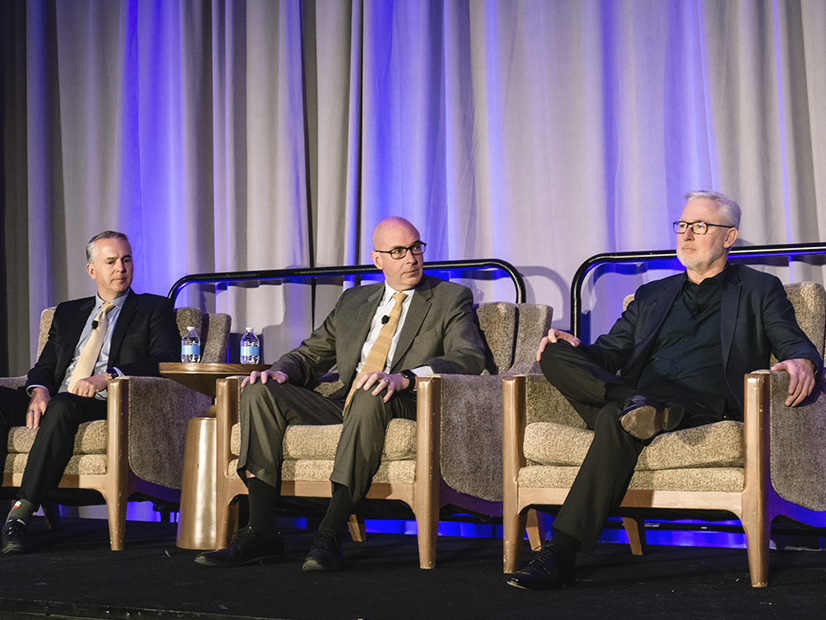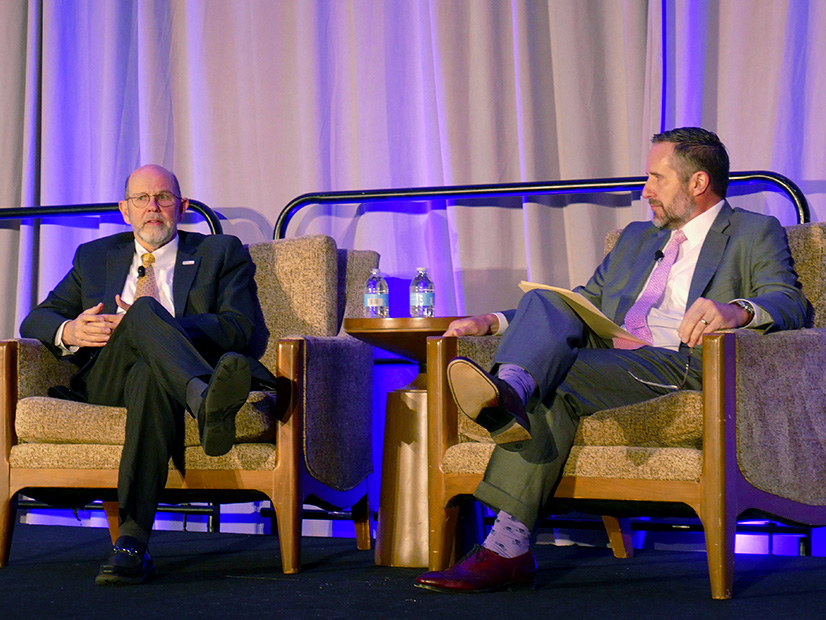
WASHINGTON — While their net-zero emission targets might not kick in until the 2030s, the power industry already is dealing with the issues they create, panelists said at the Electric Power Supply Association’s Competitive Power Summit on March 26.
New York has seen the Indian Point Nuclear Plant, its coal fleet and a number of peaking plants around New York City shut down in recent years, cutting a once-thick reserve margin to near the required target, NYISO CEO Rich Dewey said. With other thermal generation retirements expected in the rest of this decade, new supply is going to need to come online to replace them.
“I have grave concerns about the winters of 2030, 2031, 2032; that’s when we’re going to need to see some of that new supply to come online,” Dewey said.
NYISO already has seen improvements in the speed of its interconnection queue, Dewey said, having embarked on changes before Order 2023 was issued last July. While that is less of a barrier, new development faces other issues.
“So, we’ll solve the interconnection problem, but I’m not sure that there aren’t other problems right behind that,” Dewey said.
For example, the state has made a big bet on offshore wind, but it faces higher interest rates and supply chain constraints, which are affecting projects all along the East Coast, he added.
“Everybody kind of giggled when Rich said, ‘My concern is eight years away,’” said Competitive Power Ventures Senior Vice President Tom Rumsey. “If I started tomorrow, I couldn’t build him a combined cycle in that time frame. Right? You can’t. And that’s why he’s worried. I think people sort of think that it’s a three- to four-year process. It isn’t.”
Construction takes about that long, but from conception through the regulatory process to actual construction makes the total time to build a new gas plant longer than eight years, he added.
That ignores the politics around natural gas, as NYISO is looking for “dispatchable emissions-free resources,” for which it has coined the widely adopted acronym of “DERF.”
NERC has placed policy as one issue that threatens reliability. CEO Jim Robb said at the conference that has started to change some minds.
“I think I read that New York has now either approved, or is considering approving, adding compression to some of the pipelines serving the state there,” Robb said. “So again, kind of counter to the political winds. So that’s great news, right? That we’re getting a little bit more acceptance of the importance of gas in the in the mix.”
That comes after the “politically courageous” decision in California to extend the life of the Diablo Canyon Nuclear Plant after it started running into resource adequacy issues during heat waves, and the deal to keep the Everett Marine Terminal open, which is a vital source of LNG imports for New England in the winter, Robb said. (See Constellation Reaches Agreement to Keep Everett LNG Terminal Open.)
ISO-NE has dealt with energy issues in the winter for 20 years; it was 2004 when it had “8 GW of natural gas generators call in sick one Monday and say, ‘We don’t have any fuel,’” CEO Gordon van Welie said. While the issue is longstanding, van Welie said some notable changes have occurred in the past couple of years.
ISO-NE has developed a “probabilistic energy adequacy tool” to assess adequacy, van Welie said. “And that has given us a much better analytical framework for assessing these risks, both of the near term and the long term.”
That has led to conversations in New England about adding an “energy adequacy standard” to the common resource adequacy standard, he added. ISO-NE also has worked on capacity accreditation.That’s been happening around the country as other regions face similar issues, if not the same acute winter reliability threats.
New England has moved forward on gas-electric coordination. But it still faces issues there, as fuel will continue to be important, though used much differently than today, van Welie said. Electrification is going to mean higher demand as other resources retire.
“The balancing energy source is going to be natural gas,” van Welie said. “And all the studies we’ve done, [and] studies I’ve looked at, show that the dynamic is [that] the average demand for gas is going to drop because of all the renewables on the system, but the peak demand is going to spike up.”
That raises the question of how the market can solve that issue: If natural gas plants run rarely, it will be even less economic for them to get firm service from pipelines, van Welie said. To find the answer, he said the industry needs analytics to gauge how to use natural gas to balance a higher share of renewables.
Texas is ahead of New England when it comes to renewables, though as the country’s largest producer of natural gas, it does not have the same issues, ERCOT CEO Pablo Vegas noted. He said he’s seen some of the same studies as van Welie, and he expects gas plants will run less overall but have much higher peak demands.
The growth of solar in Texas has made it easier to meet those high peak demands in the summer, but ERCOT still can face tight conditions in the winter when that resource is far from peak production, Vegas said.
While the state benefits from plentiful energy supplies, Texas’ role as an energy capital is contributing to large demand growth, as the oil and gas sector continues to electrify its operations.
“In the Permian area of Texas, we saw … a new set of load expectations that were far above what our historical plants anticipated for that area,” Vegas said. “And to put [that] into context, just in the next five, six years in the Permian area, we saw new load forecasts upwards of 25 GW.”
That’s the equivalent of adding another entire Dallas-Fort Worth area to the Texas grid in the next half a decade, he added. About half of the demand is expected to come from the oil and gas industry, with other sources of demand from new hydrogen production, manufacturing and cryptocurrency mining.
While EPSA effectively was set up for firms that build natural gas plants, some of its members also are in the renewable development business, American Clean Power Association CEO Jason Grumet said. He noted that two-thirds of the renewables deployed last year were from firms that also own fossil and nuclear assets.
ACP pushes for the transition to clean energy, but Grumet said the No. 1 priority for anyone who works in the energy industry is reliability.
“If we have interruptions of power supply, that … interrupts the trajectory of our energy policy goals, right?” Grumet said. “So, it is obviously not in the interest of the individual, nor is it in the interest of the policy debate.”
ACP shares the same goals as much of the rest of the energy industry around changing the rules for permitting because, Grumet said, it’s needed for the U.S. to meet its net-zero goals. Permitting reform for “linear infrastructure” can help get renewables built and ensure they have the gas needed to balance them.
“If you have any affinity to engineering or math, you’d say that we are not on target to achieve a zero-carbon grid in 11 years,” Grumet said. “I think people get confused when you tell the truth; they think you’re either being courageous, or you’re suggesting complacency. It’s just the truth.”


